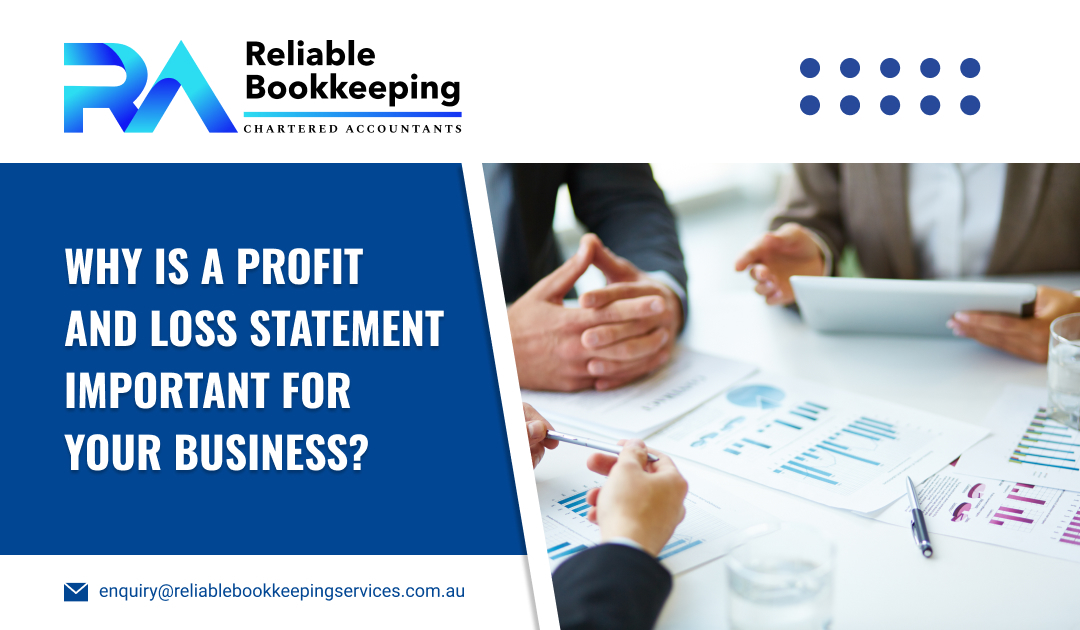Many startup business owners often ask whether they need to prepare financial statements. For an accountant or a bookkeeper, the answer is ‘yes’, but it’s crucial to clarify the purpose of preparing financial statements and their purpose. In today’s blog, we’ll explore the profit and loss statement and the reasons for preparing it.
What is a Profit and Loss Statement?
The profit and loss statement is a simple way to make a summary of income and expenses incurred during a specific period of time. Profit and loss (P&L) statements help you understand the financial position of your business. It may also be called an income statement, expense statement, statement of operations, earnings statement or statement of financial results. You can ask an accountant or small business bookkeeper to prepare it for you.
Profit and loss statement is not same as the balance sheets. Balance sheet only shows your the financial status at a specific time, on the other hand, P&L statement gives you an insight into revenue, operating costs, and earnings over time minus your expenses for a specific time period.
Why is the Profit and Loss Statement Important?
Profit and Loss Statement is useful for analysing the long-term profitability and viability of a company. It can help businesses to check the effects of their business strategies on their finances and improve their ongoing strategies. P&L statements are legal requirements for all companies in Australia. It tells you how much you have earned and how many expenses have been incurred in a specific time period. With a P&L statement, you can develop sales targets and suitable prices for your goods and services.
A P&L statement helps you to:
- Assess Profitability: Determine whether your business is earning a profit or incurring losses.
- Enhance Planning: Provide a clearer view for budgeting and strategic planning.
- Make Data-Driven Decisions: Guide your decisions on where to reduce expenses or increase investments.
- Attract Investors and Secure Financing: Lenders and investors typically review your P&L statement to assess your business’s financial stability.
For small business owners in Melbourne, working with small business accountants Melbourne can help ensure your P&L statement is accurate and informative.
Balance Sheet vs. Profit and Loss Statement vs. Cash Flow Statement
Understanding the key financial statements is essential for assessing the financial health of a business. These statements provide valuable insights into a company’s performance, financial position, and cash management. Three of the most critical financial statements are the Balance Sheet, Profit and Loss Statement (P&L), and Cash Flow Statement. Each of these documents serves a unique purpose and provides different information that helps stakeholders—from investors to managers—make informed decisions.
- Balance Sheet: A balance sheet shows a company’s liabilities and assets. Assets could include sales, accounts receivables, cash, or longer-term assets like equipment and property. Liabilities could include wages payable or long-term liabilities.
- Profit and Loss Statement: A profit and loss statement shows a company’s expenses and income over a period of time. A P&L statement gives you an insight into a company’s financial situation and is generated every month, quarter, or year. Investors can use this information along with a company’s cash flow statement and balance sheet to estimate the company’s profitability.
- Cash Flow Statement: A cash flow statement is a financial statement, which gives you a summary of the amount of cash flowing in and out of an organisation. The main purpose of the statement is to present relevant information regarding the agency’s cash receipts and cash payments over a specific period.
When the P&L statement is combined with the Balance Sheet and Cash Flow Statement, it provides a complete picture of your company’s financial performance and supports long-term growth and success. Preparing an accurate P&L statement is essential for any business looking to grow. The P&L statement is not only a legal requirement in many places, but also a valuable tool for setting sales targets, pricing strategies, and attracting investors.
Conclusion
A Profit and Loss (P&L) statement is vital for understanding your business’s financial health. It helps assess profitability, improve planning, and make informed decisions. Reliable bookkeeping services are essential for accurately preparing this statement, as they ensure that all income and expenses are properly recorded.

